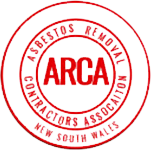Back in the 1940s, asbestos was heavily used in more than 3,000 products across the construction and automotive industry due to its heat-resistant properties. While it provided great protection for materials used in residential properties and commercial buildings, it was later discovered that asbestos caused severe health conditions for residents and builders who inhaled or ingested it.
So what are the asbestos symptoms that property or building owners should be aware of, and what are the next steps if you’re exposed? This blog will provide insight into the health risks of asbestos exposure and when to consult an expert on asbestos removal.
The history of asbestos
Asbestos is a group of six naturally occurring fibres resistant to heat, chemicals, corrosion and electricity. Because of this, construction and manufacturing industries used asbestos to provide insulation to ensure buildings were fire-proof and to strengthen cement or other plastics.
While asbestos has its benefits, it remains in the body and can build up in the lungs when inhaled or ingested. Asbestos exposure symptoms can cause inflammation and disrupt a person’s genetics.
Australia’s use of asbestos was slowly phased out in the 1980s, with the fibre completely banned in 2003.
Symptoms of asbestos exposure
Asbestos exposure should be taken seriously. It can have life-threatening health consequences, including lung cancer, asbestosis and mesothelioma — a rare form of cancer that affects the lining of the lungs. The common symptoms of asbestos exposure include:
- Shortness of breath
- Coughing
- Wheezing
- Chest pain
- Difficulty swallowing
- Weight loss
- Fatigue
More serious asbestos exposure symptoms to be aware of include:
- Difficulty breathing
- Shortness of breath with exertion
- Blueness of the lips or fingernails due to lack of oxygen in the blood
- Swelling of the face, neck, or abdomen
- Hoarseness
- Coughing up blood
If you have been recently exposed to asbestos and believe you have asbestos symptoms, it is critical to see a doctor as soon as possible. Early diagnosis and treatment are your best chances of a successful outcome.
Asbestos removal by GBAR Group
GBAR Group is Australia’s most trusted asbestos removal company. Not only are our team rigorously trained and fully certified, but our occupational health and safety symptoms are also certified to ISO and AS standards — our work is also conducted following the Safe Work Australia Code of Practice 2011.
GRAR Group services clients across all industries and residential properties. If you are interested in obtaining our services for asbestos removal, request a consultation today.
FAQs
What areas of the house might contain asbestos?
If you own an older home or purchased a home during the years when asbestos was used, it’s important to be aware of areas where asbestos may be present. These include:
- Insulation in walls and attics
- Ceiling tiles
- Blankets and asbestos tape that cover hot water pipes
Please note that asbestos may also be present in your car’s clutch, transmission and brakes.
Which industry is most at risk of asbestos exposure?
As asbestos was prominently used by the construction and manufacturing industry, some of the sectors that are most at risk of asbestos exposure are:
- Building demolition
- Auto-industry (mechanics)
- Railway construction
- Shipbuilding
- Firefighting
How can I reduce my asbestos exposure at home?
If your home contains asbestos, there’s no need to worry about exposure unless the materials become damaged or disturbed — materials still in good condition only require regular check-ins for wear and tear.
Homeowners should be concerned about asbestos exposure and request an inspection if they have plans to renovate or notice the materials are damaged. GBAR Group can provide inspections to property owners in Sydney, Greater NSW, Wollongong, Brisbane and Queensland.





